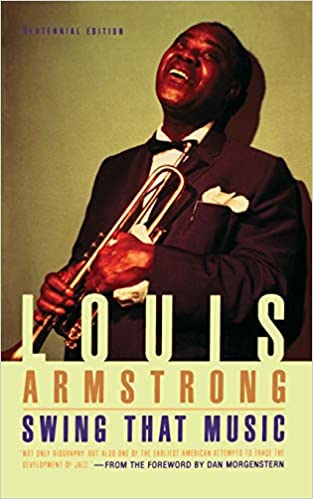Description
Release Date: 1936
Publisher: Da Capo Press
ISBN: 0306805448
Softcover, 208 pages
The first autobiography of a jazz musician, Louis Armstrong’s Swing That Music is a milestone in jazz literature. Armstrong wrote most of the biographical material, which is of a different nature and scope than that of his other, later autobiography, Satchmo: My Life in New Orleans (also published by Da Capo). Satchmo covers in intimate detail Armstrong’s life until his 1922 move to Chicago; but Swing That Music also covers his days on Chicago’s South Side with “King” Oliver, his courtship and marriage to Lil Hardin, his 1929 move to New York, the formation of his own band, his European tours, and his international success. One of the most earnest justifications ever written for the new style of music then called “swing” but more broadly referred to as “Jazz,” Swing That Music is a biography, a history, and an entertainment that really “swings.”
Review
“Advertised in 1936 as “the first standard book in English on the new Swing Music,” Louis Armstrong’s partly ghostwritten Swing That Music remains a fascinating text. The musical examples and Rudy Vallee’s oddly astute prologue complement the lively if often inaccurate narrative. Some of it is surely true, but I wouldn’t bet on the passages concerning Armstrong’s love of Mark Twain.” — Gary Giddins, author of Satchmo and Faces in the Crowd
“It could well be said that Louis Armstong spent a lifetime working on his autobiography. From his earliest surviving letter (dated 1922) to his final sketches (from 1969), he spun out tales that add up to fascinating variations on a theme, His first published book, Swing That Music, is not always in his own true voice, but enough of it is to make it much more than a historical curiosity. No more fitting subject could be imagined for the very first biography of a jazz musician. But Swing That Music (astonishingly out of print for some 55 years) is not only a biography, but also one of the earliest American attempts to trace the development of jazz-then thought to be something that culminated in a music called ‘Swing.'” — Dan Morgenstern, Director, Institute of Jazz Studies, and author of Jazz People








